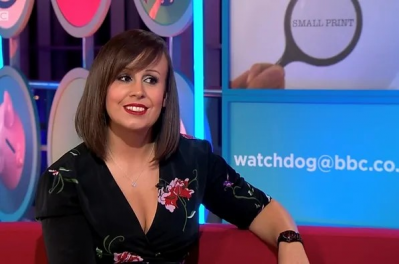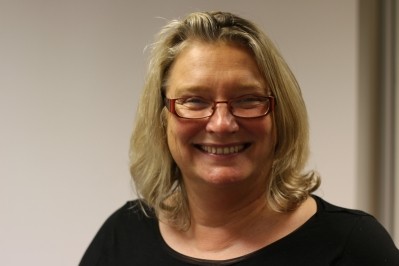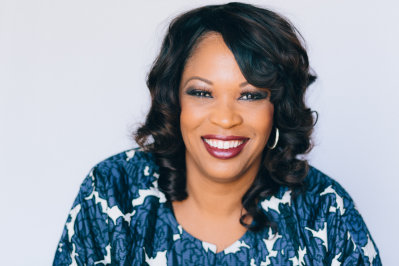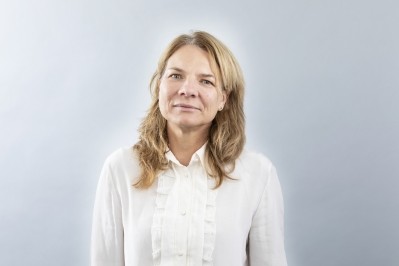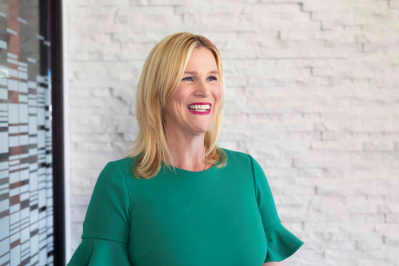Women in Science: Follow your passion and you’ll get to where you’re meant to be - Jennifer Visser-Rogers

From math hater to a leader in clinical data, it’s been a long journey for Jennifer Visser-Rogers, vice president for statistical research and consultancy at Phastar.
She tells us how she discovered her love of statistics, why honing her craft has fed her passion to make a difference, and that she will never pull the ladder up behind her.
Could you give us an overview of your work?
As Phastar’s vice president for statistical research and consultancy, I wear two different, but very much interconnected, hats within the business.
Firstly, I manage our strategic consultancy offerings, working on projects that keep the company at the cutting edge of new statistical developments, and also lead our research activities. The two roles feed into each other. The consultancy helps us understand the research challenges our clients and the industry are facing, and we then use that information to design commercial offerings that provide the solutions.
I also head up the Phastar Cares initiative, which offers pro bono access to our specialist statisticians, programmers, and data mangers managers.
When did you realize you were interested in science?
I hated math in high school, but a teacher convinced me to do it at A level. I was convinced I would drop it after the first year, but when I did a statistics module, I absolutely fell in love with it. Up until then, I had found math really abstract, but when I started doing statistics I thought “this is what I should be doing”. I loved the idea that mathematical thinking could have a real impact on the world, and it lit a fire in me.
Medicine, on the other hand, I have always been interested in. Nothing else pulls on my heartstrings in the same way. When I started doing statistics, it was a lightbulb moment because I realized I could use math to help people.
Could you describe your personal journey bringing us to where you are now?
After discovering my love of the subject, I went to Lancaster University to study math with statistics, and then stayed on to do my masters. Up to that point I was aiming to work in the pharmaceutical industry, but the course included numerous mini research projects, which I really enjoyed, so I enrolled on a PhD at Warwick University. There, I developed a new way of analyzing epilepsy data, and, via the London School of Hygiene and Tropical Medicine, moved to the University of Oxford with a research grant to apply my methods to cardiovascular disease.
This move into the cardiovascular space involved a lot of regulatory interactions, really thinking about how to challenge the status quo through analysis methods and endpoints that were more representative of the effect of treatment on the patient burden. I loved that what we were doing could really benefit patients. After my research grant came to an end, I took up a new role to set up and run a consultancy unit within the statistics department. That’s when I thought about moving from academia into industry, where I could feed my passion for applied research. Phastar offered me a role heading up their research, and, over time, that evolved into the role I have now.
Volunteering outside of my daily role is something that I’ve always been really passionate about. I think that it's made me better at my job and has also helped me develop as an individual. I carry out a lot of public engagement focused on understanding statistics, including Ted Talks, TV and radio, as well giving talks at schools. There's nothing like standing in front of 1,000 teenagers to make you really think about how you communicate complex statistical ideas to non-statisticians. I am a past vice president of the Royal Statistical Society, and currently chair of their long-term strategy group, as well as a trustee of the Florence Nightingale Museum, and president elect for the British and Irish region of the International Biometrics Society. I really get a lot of energy from these kinds of activities.
What challenges did you face - as a woman or otherwise - along the way and what is the most valuable lesson you have learned?
I have faced a lot of trolling and negative, personal comments related to my public engagement work. I think as soon as you become established and more recognized, either through public engagement or in industry, you almost become public property and people feel entitled to take a swipe at you. People will often pass comment on my appearance following a public appearance, for example, or share what I said out of context in an effort to discredit me on social media. Others will tell me I have been appointed to roles within professional organizations to meet diversity criteria, rather than on my merit. This happens to everyone, I know, but I do think it is more common for women than men.
One of the biggest challenges I have had to overcome is to not listen to these kinds of comments. It has taken me a long time not to base the value of myself or my achievements on what other people think and say. It’s easier said than done and a lot of it comes from age and experience.
My advice is to surround yourself with people whose opinion you trust – people who want to see you grow and evolve, and can give you constructive feedback when needed – and shut out the negativity.
What ignites your passion in your current role?
I have a desire for knowledge, and I love that in my role that I get to work with, and learn from, incredible people from across disciplines. We work together to solve complex problems and actually help patients. Using statistics to improve patients’ lives is my passion, and it is a huge privilege to be able to do exactly that.
During my time in the role, I've learned so much about different statistical methodologies, and different therapeutic areas, but I have also been able to share my own expertise. Once a lecturer, always a lecturer, so I love teaching and coaching our junior personnel.
What is your current work ethos/style?
I recently heard someone say that the role of a woman in leadership is not to take the seat at the table, but to pull up more chairs. This is something that really resonated with me. I've been so fortunate to have some great mentors who have helped me to evolve and grow, and that's something that I really try to emulate.
You're ever too busy to take an hour to talk to someone, especially someone more junior who wants to talk about career pathways. My door is always open, and, when an interesting opportunity comes along, I try to share it with junior colleagues and make sure they get the credit. We all need to pay it forward.
Could you share some advice for young women starting to develop an interest in science or wanting to pursue a career like yours?
Firstly, don’t think you have to have everything planned out at the beginning. If you do what you enjoy, you will end up where you are supposed to be. We spend so much of our lives at work that it should be something you like doing, something that you are passionate about. My path to where I am today hasn’t been a straight line, with a set career pathway, but I’ve always done roles that have made me happy and have moved on when they’ve stopped being enjoyable.
I’d also say, “find your tribe”. It is so important, especially for women, to have people around you who want what is best for you; people who want to help you evolve rather than tear you down. Just talking to people who are facing the same challenges as you, whether that’s dealing with trolls or juggling childcare, can be a huge help. And remember to do the same for others. Build support networks and share experiences, because everything is better when you do it together.
